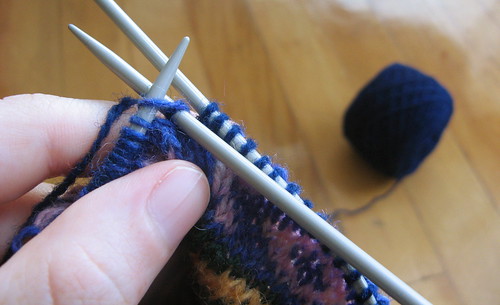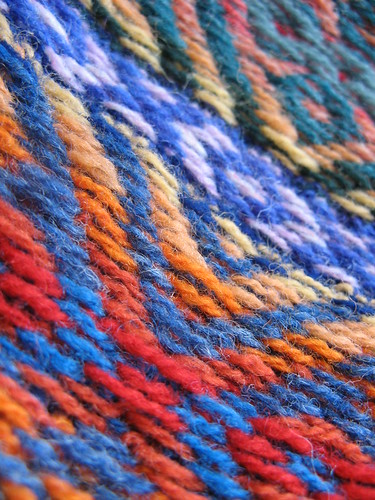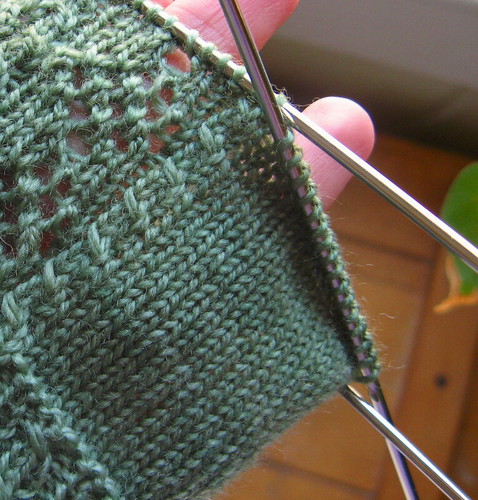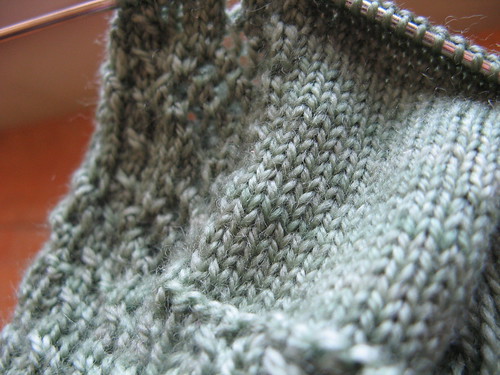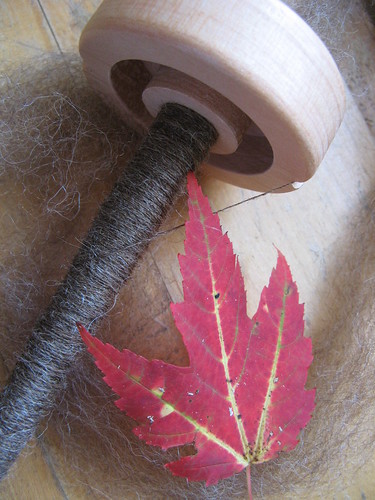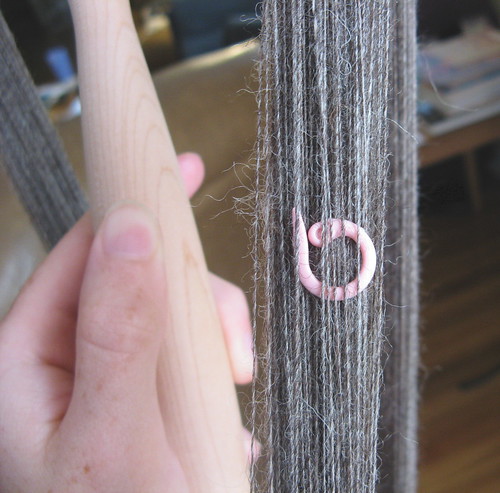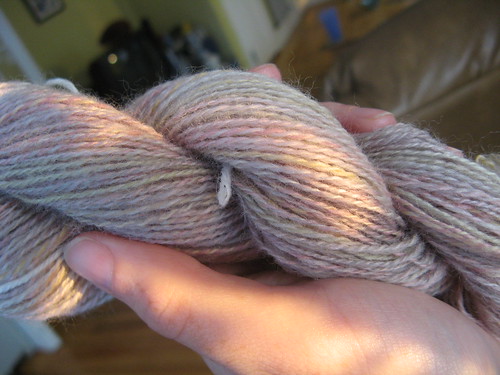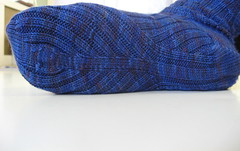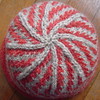lessons
This is my lesson:
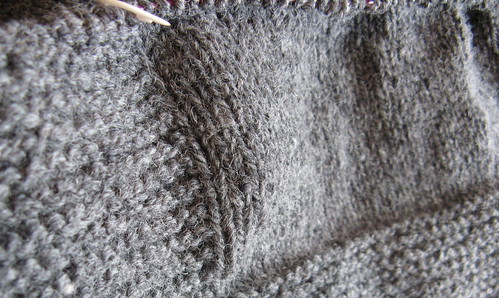
I... enjoy knitting large amounts of stockinette and garter stitch.
Or perhaps the lesson really lies in the dozens of hours I've spent spinning, as I'm convinced that that was what taught me true appreciation for simple, calming, repetitive tasks.
I've started knitting Cobblestone (Fall '07 IK, designed by Jared Flood) for Alex. I showed him a couple of options to start out with, with Elizabeth Zimmermann's Saddle Shoulder Aran Cardigan as choice number 1 from my perspective. He chose Cobblestone, he chose charcoal grey, and I started knitting. I'm much farther than that photo shows -- two 100 g. skeins (of Harrisville Highland) in, with over a foot of the body done. I knew that love would make knitting a "boring" sweater tolerable and even enjoyable, but it turns out that love is just the icing on the cake.
Have I discovered the yoga of knitting? Is it time to write a book? Or I could stop being all faux-new-agey about it, and just enjoy.
Besides embracing my inner stockinette, I've been finishing the project I've been working on for The Anticraft. I pains me so much to not be able to share anything about it yet. Well, except for this teaser photo, which is so much of a teaser that it may not even be worth it. But here goes, anyway:

This is such a fun project that I may need to write out the blog post about it now, even if I have to wait weeks to post it. Just to get it out of my system. Of course, I'd be better off writing up the pattern (and taking photos), so I don't find Zabet on my doorstep with a baseball bat in a couple of weeks, to teach me a lesson about tardiness.
(Okay, for real, what I have planned for this afternoon is laundry, spinning, and The Good Housekeeping Marriage Book. Shhhhh! I promise I'll get to that pattern writing tomorrow...)

I... enjoy knitting large amounts of stockinette and garter stitch.
Or perhaps the lesson really lies in the dozens of hours I've spent spinning, as I'm convinced that that was what taught me true appreciation for simple, calming, repetitive tasks.
I've started knitting Cobblestone (Fall '07 IK, designed by Jared Flood) for Alex. I showed him a couple of options to start out with, with Elizabeth Zimmermann's Saddle Shoulder Aran Cardigan as choice number 1 from my perspective. He chose Cobblestone, he chose charcoal grey, and I started knitting. I'm much farther than that photo shows -- two 100 g. skeins (of Harrisville Highland) in, with over a foot of the body done. I knew that love would make knitting a "boring" sweater tolerable and even enjoyable, but it turns out that love is just the icing on the cake.
Have I discovered the yoga of knitting? Is it time to write a book? Or I could stop being all faux-new-agey about it, and just enjoy.
Besides embracing my inner stockinette, I've been finishing the project I've been working on for The Anticraft. I pains me so much to not be able to share anything about it yet. Well, except for this teaser photo, which is so much of a teaser that it may not even be worth it. But here goes, anyway:

This is such a fun project that I may need to write out the blog post about it now, even if I have to wait weeks to post it. Just to get it out of my system. Of course, I'd be better off writing up the pattern (and taking photos), so I don't find Zabet on my doorstep with a baseball bat in a couple of weeks, to teach me a lesson about tardiness.
(Okay, for real, what I have planned for this afternoon is laundry, spinning, and The Good Housekeeping Marriage Book. Shhhhh! I promise I'll get to that pattern writing tomorrow...)
Labels: cobblestone

